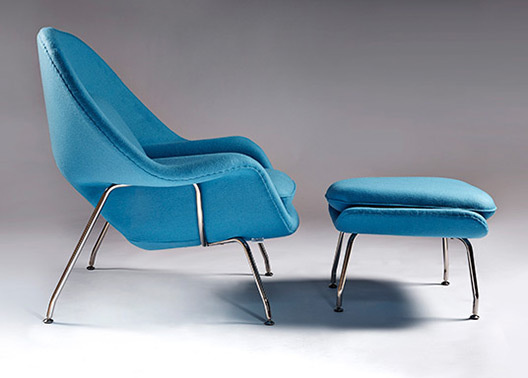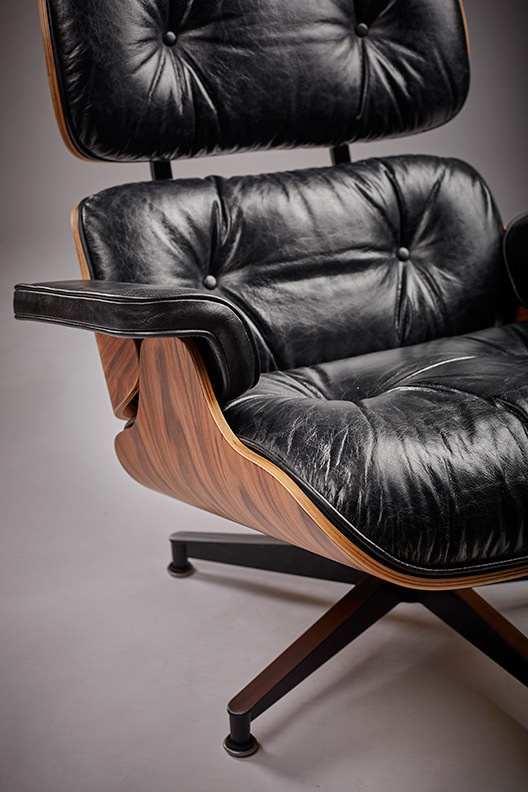Seven iconic designs that shape contemporary seating
Posted on 5th February 2025 by Mark
What are you currently sitting on? The chances are it’s a modern chair of some sort. There’s also a strong possibility that its design is based on one of seven important chair concepts.
Unless it's antique seating or a park bench, your chair will be based on modernist design. The same principles that shape much of contemporary architecture too.
The modernist movement in all its creative splendour is nowhere more evident than in the chairs that grace countless homes and business places the world over.
From the 1920s to 1960s, it firmly established the standpoint that furniture can be affordable, mass-produced, yet highly individualised and experimental. The key was in achieving design excellence and in the innovative use of quality materials.
These seven chairs encapsulate these principles perfectly and have inspired many chair design successors.
The Barcelona Chair
Modernist design dictates that it’s possible to create beautiful pieces of aspirational furniture which convey luxury and grace, without a sky-high price tag.

The Barcelona chair was the ‘birthchild’ of a partnership between Bauhaus architect Ludwig Mies van der Rohe (known as Mies) and Lilly Reich. It was designed specifically to accommodate rest for the King and Queen of Spain when visiting the 1929 World’s Fair in Barcelona.
This royalty inspired piece – now available to all-comers - features a seamless metal frame, with graceful lines and durable strength. The deeply tufted leather seat and back are also practical but constructed to offer superlative comfort.
The Womb chair
Neo-futuristic Finnish-American designer and architect Eero Saarinen also created items that have launched many replicas and variations.

The Womb Chair stands out from this prestigious innovation. It shows how a simple, everyday concept can become furniture that’s fine art.
The metal frame of the Womb Chair curves and embraces a ‘basket of cushions’ reminiscent of a baby’s bassinet. Though the name indicates a level of comfort akin to being curled up and resting within womb-like support.
The chair is beautiful to look at, but also wonderful to use.
The Egg Chair
Danish architect Arne Jacobsen had a similar aim in creating his Egg Chair, made from steel, foam, and fabric, in a rounded shape for perfect postural support in repose.

This piece’s creation was part of Jacobsen’s commission to design items for Copenhagen’s Radisson SAS Royal Hotel in the 1950s. The Egg Chair was successful in fulfilling the need for unmissable but inviting lobby seating.
How many variables of this lovely and stylish ‘cocoon’ of comfort are in production today?
The Chaise Longue
Swiss-French designer Le Corbusier also inspired decades of furniture concepts and options, with the innovative way he blended aesthetics with purposeful form.

This is epitomised in his 1928 Chaise Longue, which uses a practical steel frame to provide ergonomic support, supporting either animal skin or canvas-covered polyester cushions. The combination conveys a piece of furniture that is inviting to rest on, for long periods, but also one vividly visual and attractive in any interior.
The Eames moulded plastic and fibreglass armchair
Available in various forms and colour shades, this chair concept was originally an entry for the International Competition for Low-Cost Furniture Design in 1950.

It shows how staying true to basic and readily-available construction materials is possible – and in many ways preferable. However, with design excellence, Eames can still produce visually stunning pieces.
This Eames chair manages to be appealing to the discerning homeowner or business specifier, yet also relatively inexpensive to produce in large numbers.
The Eames lounge chair
This too is the creation of American design duo (and husband and wife) Charles and Ray Eames.

It will no doubt look familiar, as it is the basis of untold numbers of chair forms since.
The lounge chair by Eames also shows how innovative design and experimentation can transform simple materials – plywood, aluminium and plastic-backed cushions – into a chair that’s trustworthy but deeply attractive.
The Wassily Chair
This piece dates back to 1925 and came from another architect and designer influenced by the Bauhaus movement - Marcel Breuer. Its ‘industrial’ concept is formed from tubular steel and iron yarn fabric. The chair is minimal, purposeful and stripped to its most basic components. Yet, it is truly lovely to look at and can be colour matched to any décor.

The Wassily chair, like the others in this list, shows that investing in fine furniture is not about creating ‘show-homes’. Instead, you can purchase contemporary chairs that people will want to use daily, displaying the best in Modernist-design principles.
